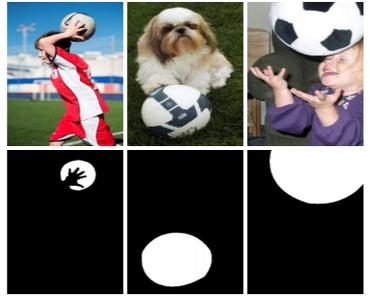Search Results for author: Weihao Li
Found 12 papers, 5 papers with code
Prompt Decoupling for Text-to-Image Person Re-identification
no code implementations • 4 Jan 2024 • Weihao Li, Lei Tan, Pingyang Dai, Yan Zhang
In the first stage, we freeze the two encoders from CLIP and solely focus on optimizing the prompts to alleviate domain gap between the original training data of CLIP and downstream tasks.
A Clustering Algorithm to Organize Satellite Hotspot Data for the Purpose of Tracking Bushfires Remotely
1 code implementation • 21 Aug 2023 • Weihao Li, Emily Dodwell, Dianne Cook
This paper proposes a spatiotemporal clustering algorithm and its implementation in the R package spotoroo.
A Hyperspectral and RGB Dataset for Building Facade Segmentation
no code implementations • 6 Dec 2022 • Nariman Habili, Ernest Kwan, Weihao Li, Christfried Webers, Jeremy Oorloff, Mohammad Ali Armin, Lars Petersson
Hyperspectral Imaging (HSI) provides detailed spectral information and has been utilised in many real-world applications.
PointCaM: Cut-and-Mix for Open-Set Point Cloud Learning
1 code implementation • 5 Dec 2022 • Jie Hong, Shi Qiu, Weihao Li, Saeed Anwar, Mehrtash Harandi, Nick Barnes, Lars Petersson
Specifically, we use the Unknown-Point Simulator to simulate out-of-distribution data in the training stage by manipulating the geometric context of partial known data.
Generalised Co-Salient Object Detection
no code implementations • 20 Aug 2022 • Jiawei Liu, Jing Zhang, Ruikai Cui, Kaihao Zhang, Weihao Li, Nick Barnes
We propose a new setting that relaxes an assumption in the conventional Co-Salient Object Detection (CoSOD) setting by allowing the presence of "noisy images" which do not show the shared co-salient object.
Curved Geometric Networks for Visual Anomaly Recognition
no code implementations • 2 Aug 2022 • Jie Hong, Pengfei Fang, Weihao Li, Junlin Han, Lars Petersson, Mehrtash Harandi
Learning a latent embedding to understand the underlying nature of data distribution is often formulated in Euclidean spaces with zero curvature.
Towards Open-Set Object Detection and Discovery
no code implementations • 12 Apr 2022 • Jiyang Zheng, Weihao Li, Jie Hong, Lars Petersson, Nick Barnes
This new task aims to extend the ability of open-set object detectors to further discover the categories of unknown objects based on their visual appearance without human effort.
GOSS: Towards Generalized Open-set Semantic Segmentation
no code implementations • 23 Mar 2022 • Jie Hong, Weihao Li, Junlin Han, Jiyang Zheng, Pengfei Fang, Mehrtash Harandi, Lars Petersson
In this paper, we present and study a new image segmentation task, called Generalized Open-set Semantic Segmentation (GOSS).
You Only Cut Once: Boosting Data Augmentation with a Single Cut
1 code implementation • 28 Jan 2022 • Junlin Han, Pengfei Fang, Weihao Li, Jie Hong, Mohammad Ali Armin, Ian Reid, Lars Petersson, Hongdong Li
We present You Only Cut Once (YOCO) for performing data augmentations.
Blind Image Decomposition
1 code implementation • 25 Aug 2021 • Junlin Han, Weihao Li, Pengfei Fang, Chunyi Sun, Jie Hong, Mohammad Ali Armin, Lars Petersson, Hongdong Li
We propose and study a novel task named Blind Image Decomposition (BID), which requires separating a superimposed image into constituent underlying images in a blind setting, that is, both the source components involved in mixing as well as the mixing mechanism are unknown.
Reinforced Attention for Few-Shot Learning and Beyond
no code implementations • CVPR 2021 • Jie Hong, Pengfei Fang, Weihao Li, Tong Zhang, Christian Simon, Mehrtash Harandi, Lars Petersson
Few-shot learning aims to correctly recognize query samples from unseen classes given a limited number of support samples, often by relying on global embeddings of images.
Deep Object Co-Segmentation
2 code implementations • 17 Apr 2018 • Weihao Li, Omid Hosseini jafari, Carsten Rother
This work presents a deep object co-segmentation (DOCS) approach for segmenting common objects of the same class within a pair of images.









